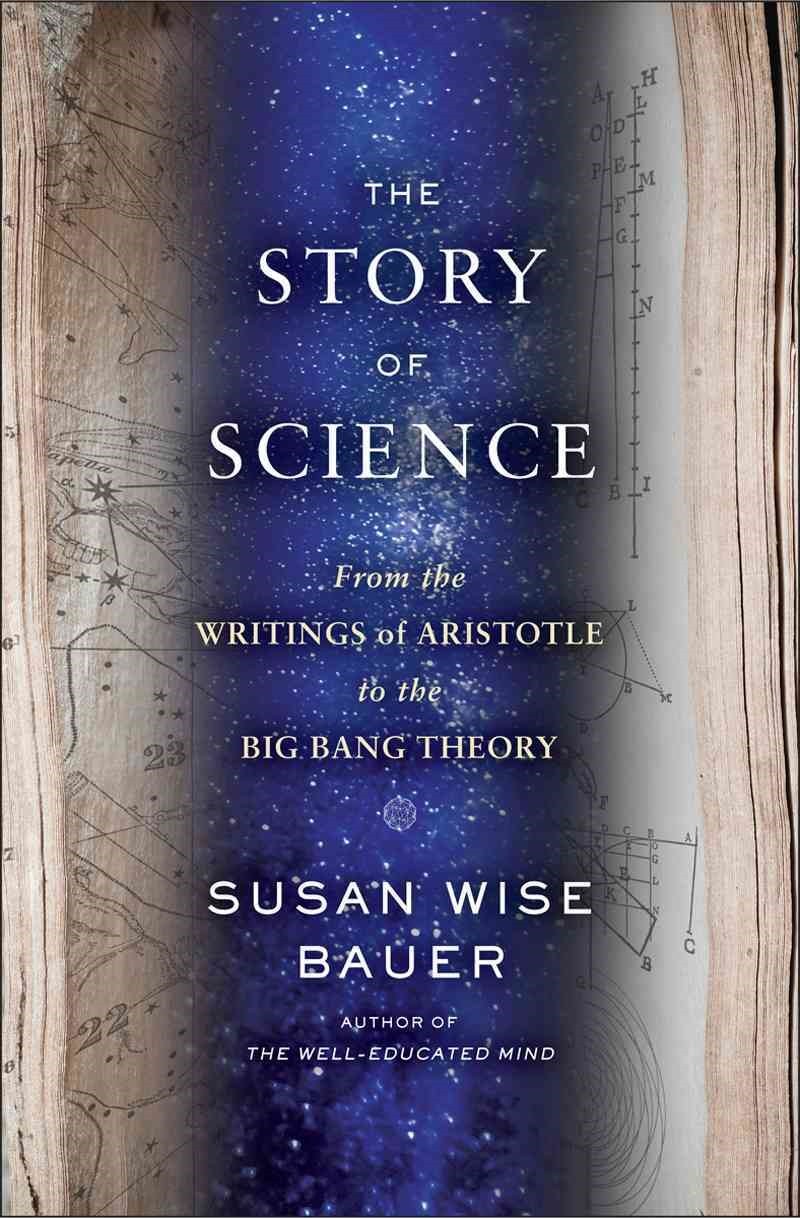
The Story of Western Science
From the Writings of Aristotle to the Big Bang Theory
کتاب های مرتبط
- اطلاعات
- نقد و بررسی
- دیدگاه کاربران
نقد و بررسی

March 15, 2015
The prolific author of the Story of the World series explores the history of science through the prism of key scientific texts.Bauer (Writing and American Literature/Coll. of William and Mary; The Well-Educated Mind: A Guide to the Classical Education You Never Had, 2003, etc.) explains that her intention is to trace "the development of great science writing-the essays and books that have most directly affected and changed the course of scientific investigation." The author divides the book in five parts, and she provides a historical context for the texts she recommends and explains the reasons for her choices. Part I, "The Beginnings," looks at the seminal writings on medicine by Hippocrates, as well as Plato, Aristotle, Archimedes, and Copernicus, who wrote his groundbreaking Commentariolus in 1514. Bauer compares different translations of the original text and explains their respective merits. In the second part, "The Birth of the Method," the author introduces Newtonian physics, and parts III ("Reading the Earth") and IV ("Reading Life") deal with geology and biology, from earth science to Darwin's theory of natural selection and Crick and Watson's groundbreaking discovery of the structure of DNA. Bauer's recommendations include Watson's The Double Helix and Richard Dawkins' The Selfish Gene. In the final section, "Reading the Cosmos," the author begins with Einstein's theory of relativity and covers works on quantum theory, cosmology, and chaos theory. In addition to guiding inquisitive readers to the original texts that record landmark discoveries, Bauer also seeks to explain "the why" of scientific discovery. The scope of the book makes it susceptible to a certain amount of superficiality-e.g., Bauer's discussion of determinism in the context of chaos theory-but that does not detract from its value. A bright, informative resource for readers seeking to understand science through the eyes of the men and women who shaped its history.

April 1, 2015
Bauer (The Well Educated Mind) highlights 36 texts that illustrate the progression of popular scientific thought in the West. The book's Eurocentric worldview cannot be denied: this is not an effort to educate readers about little-known contributors, rather the book is designed to acquaint informed nonspecialists with the greatest editions of classic scientific theories. Each chapter gives the historic context for one to three books by explaining their importance and history. This is followed by the publication information of other editions of the work(s), the ones deemed most accessible by Bauer. Chapters can be read individually but work best in sequence. The organization is mostly chronological, with sections on ancient and early modern works followed by more subject-specific sections (which follow internal chronologies) for geology, biology, and physics. The section on physics is somewhat less tightly connected to the others. Bauer does an especially good job of reminding the reader which biological and geological theories were contemporaries of one another. Helpfully, she notes which parts of the relevant titles readers really need to examine and which can be skipped. A planned companion website will include links to free editions and excerpts from some of the titles. VERDICT Overall, useful to anyone seeking to ground themselves, quickly, in the foundational works of modern science.--Cate Hirschbiel, Iwasaki Lib., Emerson Coll., Boston
Copyright 2015 Library Journal, LLC Used with permission.

May 1, 2015
When Lucretius pondered the ceaseless motion of atoms, he inscribed ancient science in lapidary poetry. But Bauer identifies Lucretius as but one link in a long chain of gifted writers who have explored scientific horizons, even if they have not themselves done science. Beginning with Hippocrates' distillation of Thales' theorizing about water, Bauer introduces readers to the early Greek writersincluding Aristotle and Archimedeswho first ventured rational accounts of natural phenomena. She then turns to the seventeenth- and eighteenth-century writers (including Bacon, Galileo, and Newton) who laid out their revolutionary investigative methodology. Finally, readers visit writers who have invited readers into the modern science explaining geology, biology, and the cosmos. To be sure, a world where scientists such as Lyell and Darwin could write for their colleagues in a language understood by a broader audience is gone. But so long as writers such as Hoyle, Weinberg, and even Einstein can still translate their work into the vernacular, general readers will share the intellectual adventure of science. An engaging compendium for serious science students.(Reprinted with permission of Booklist, copyright 2015, American Library Association.)

























دیدگاه کاربران